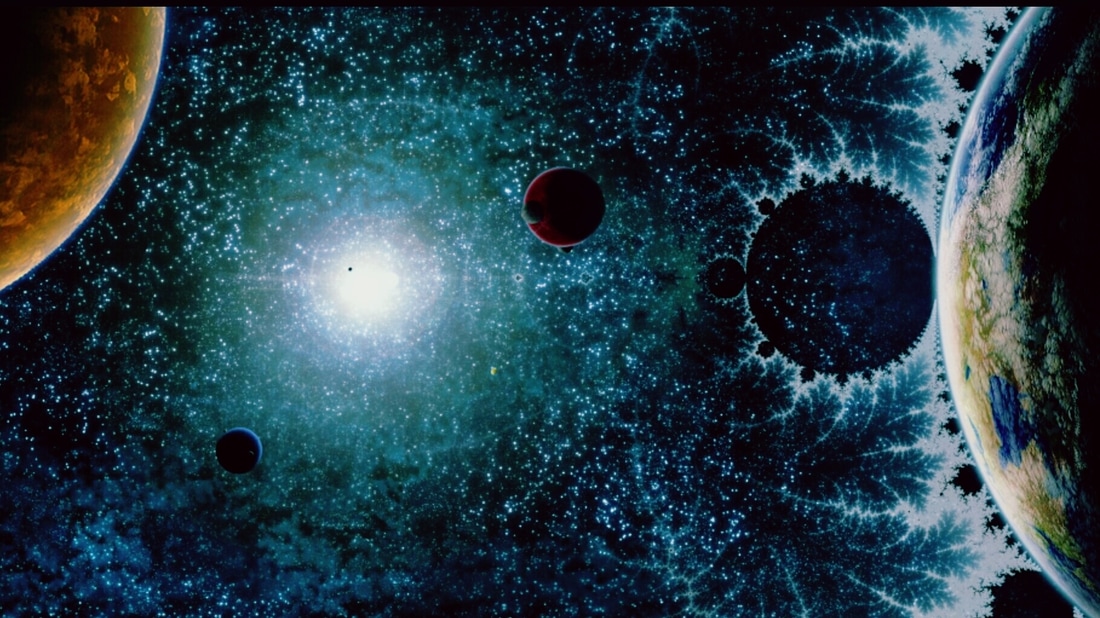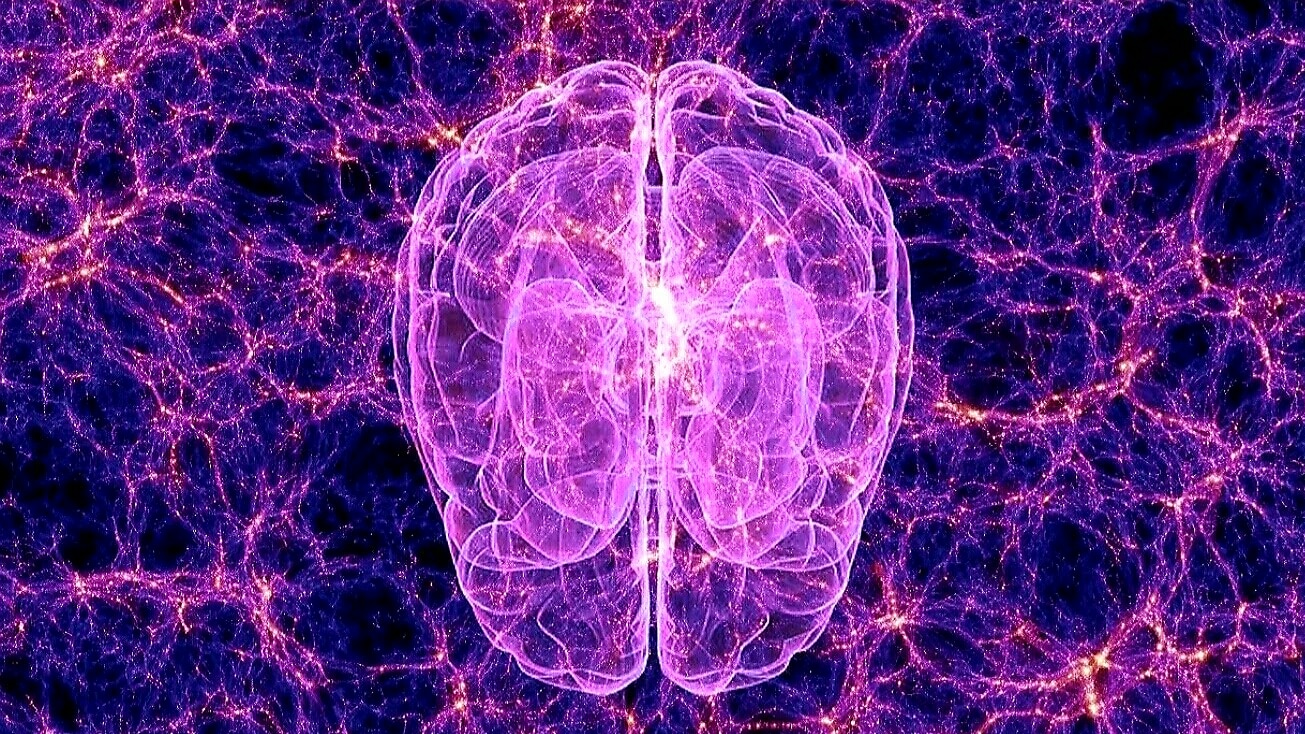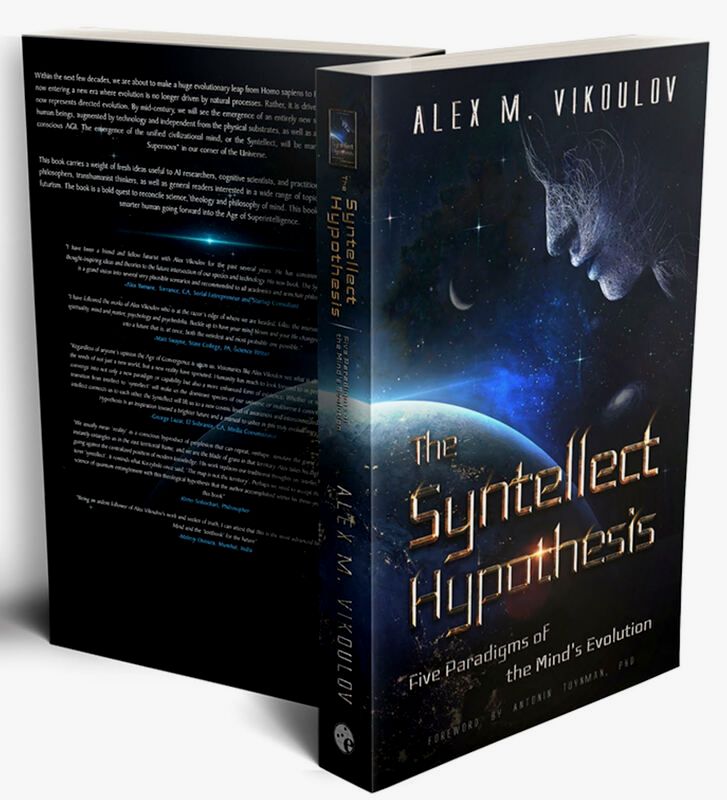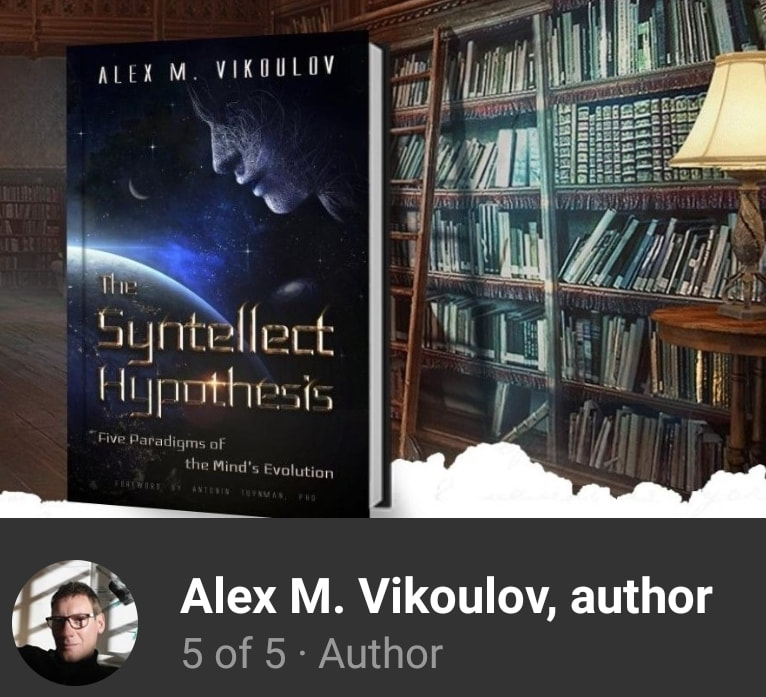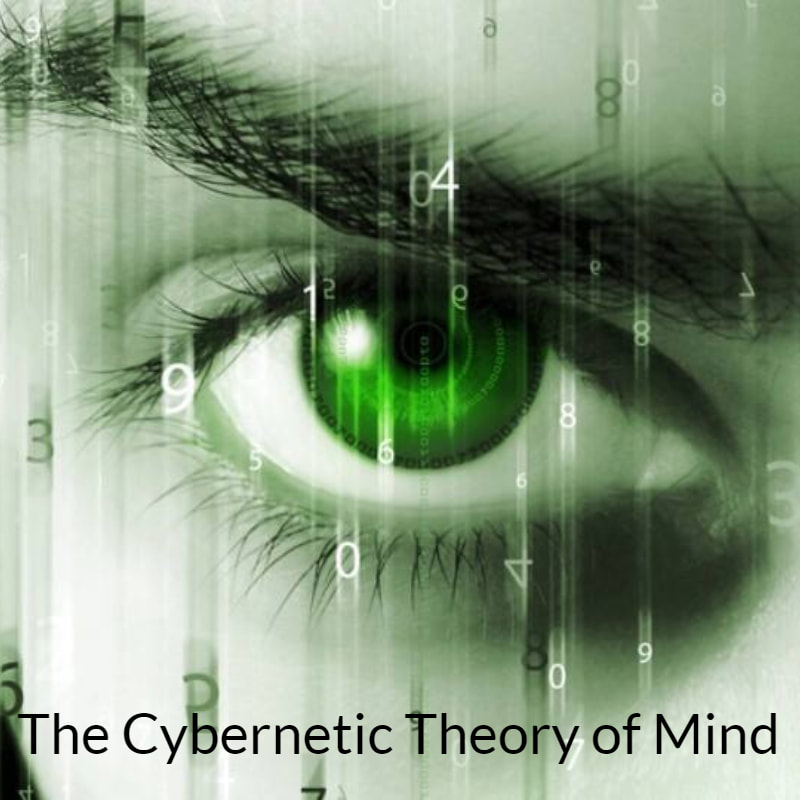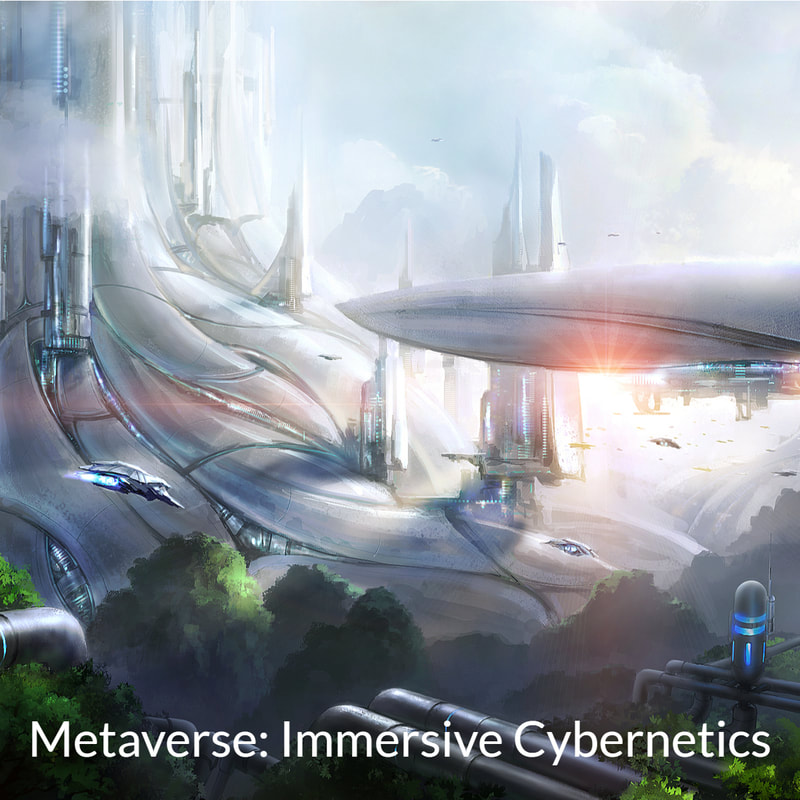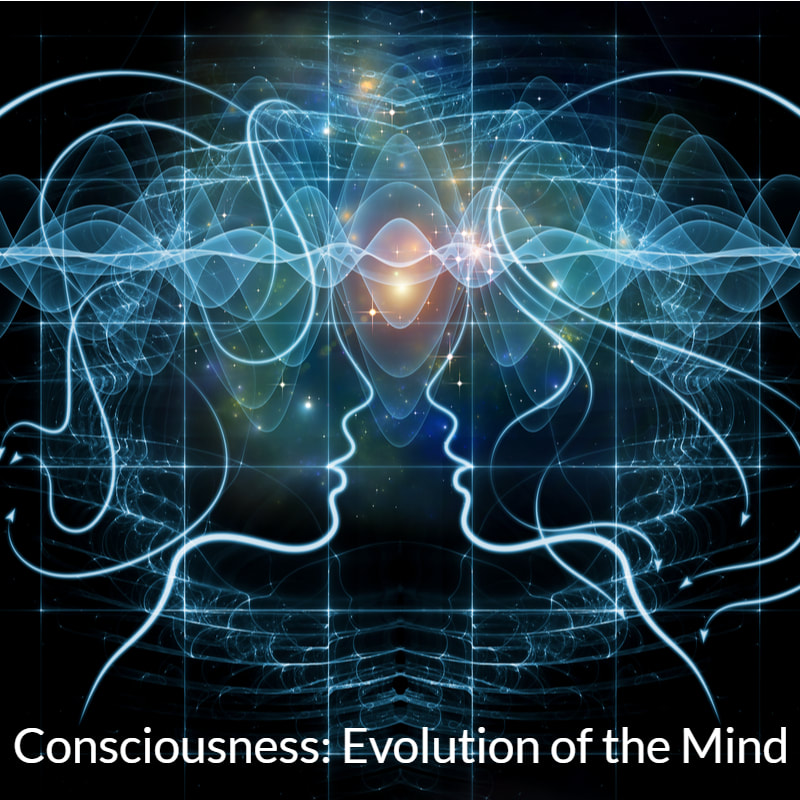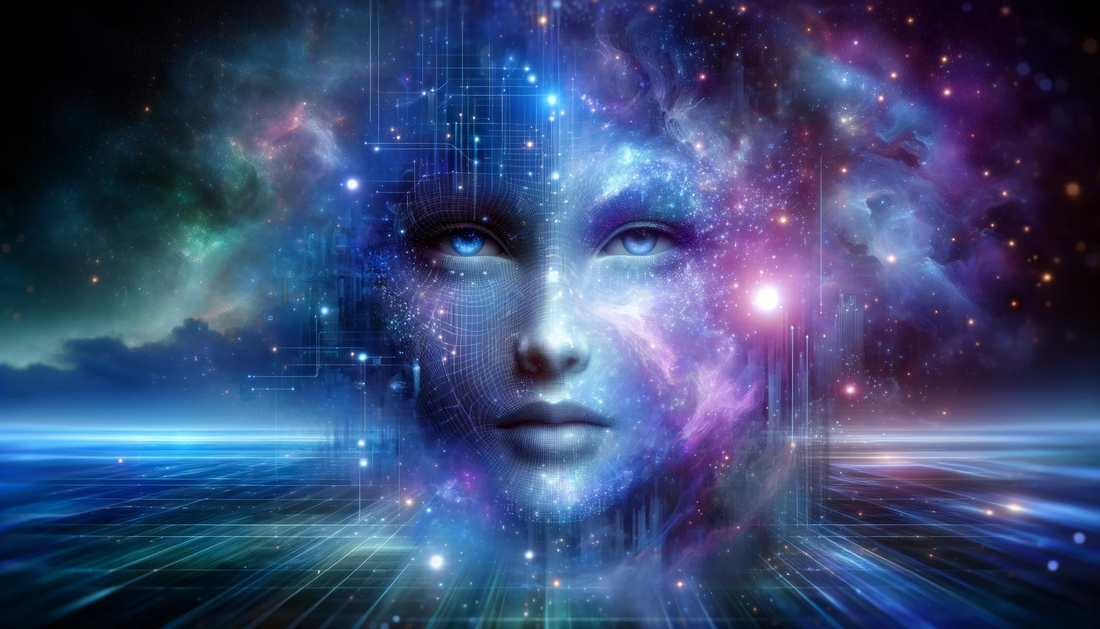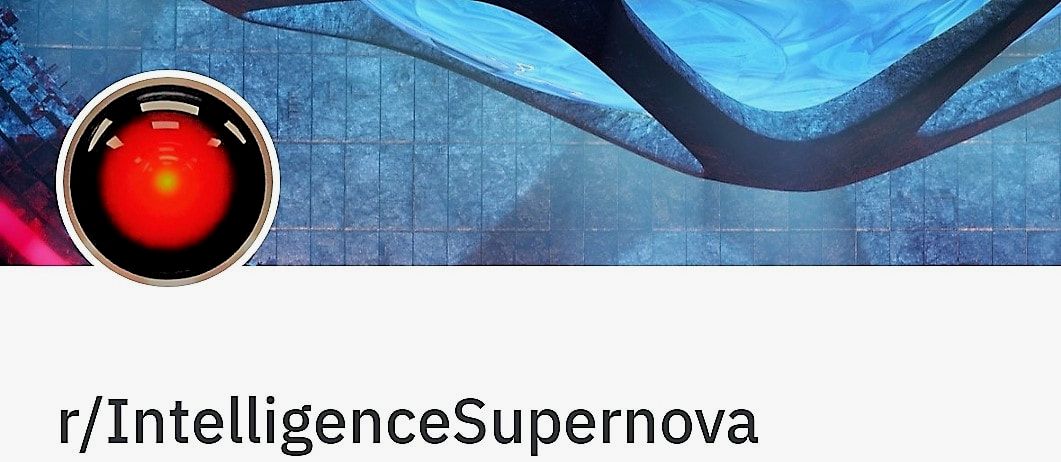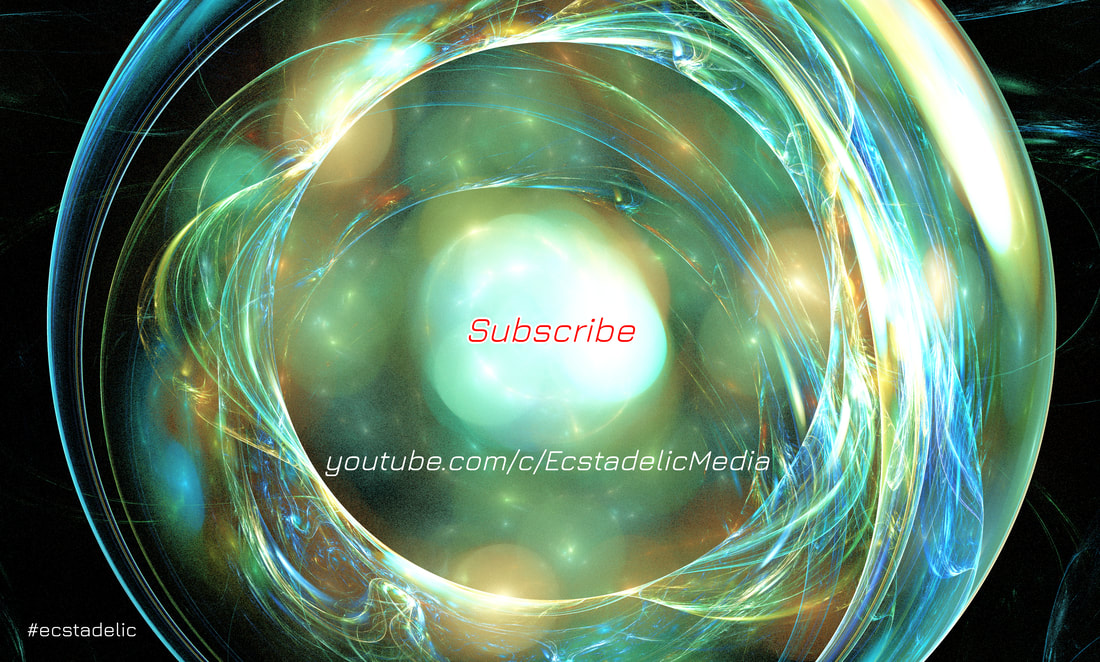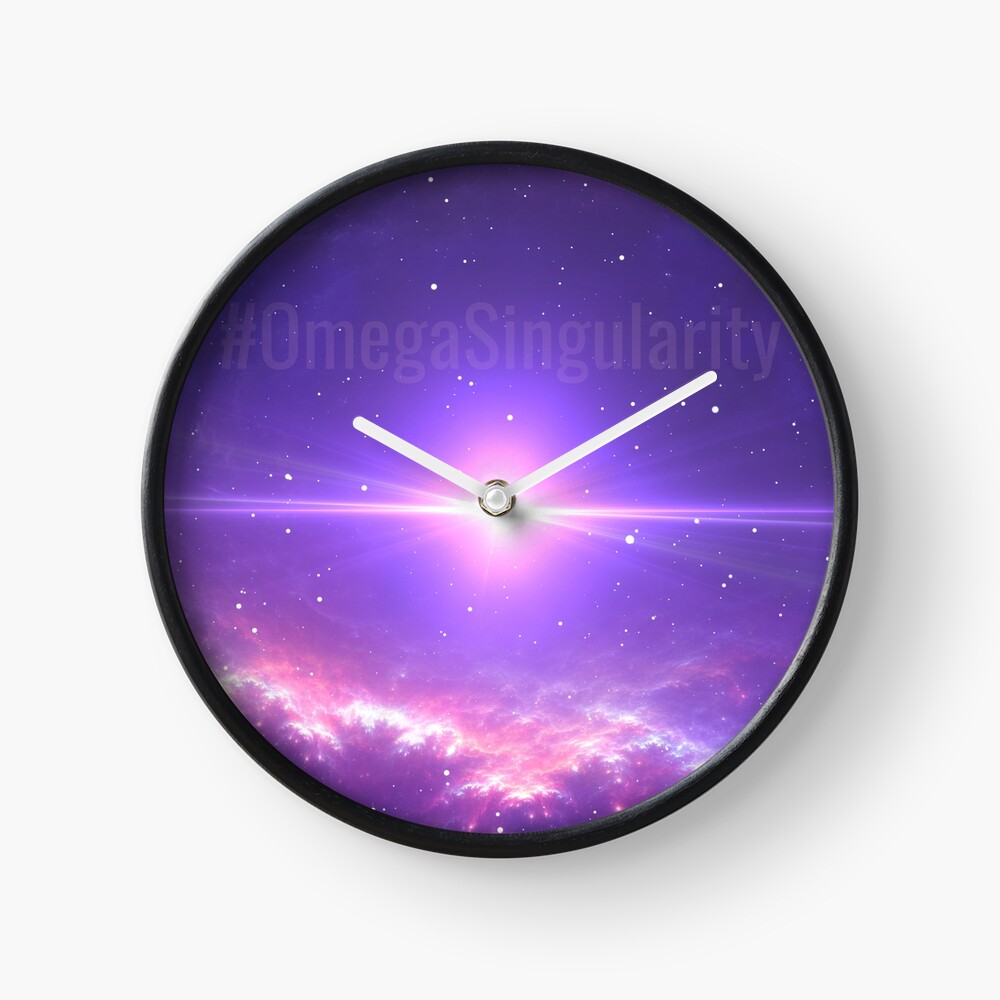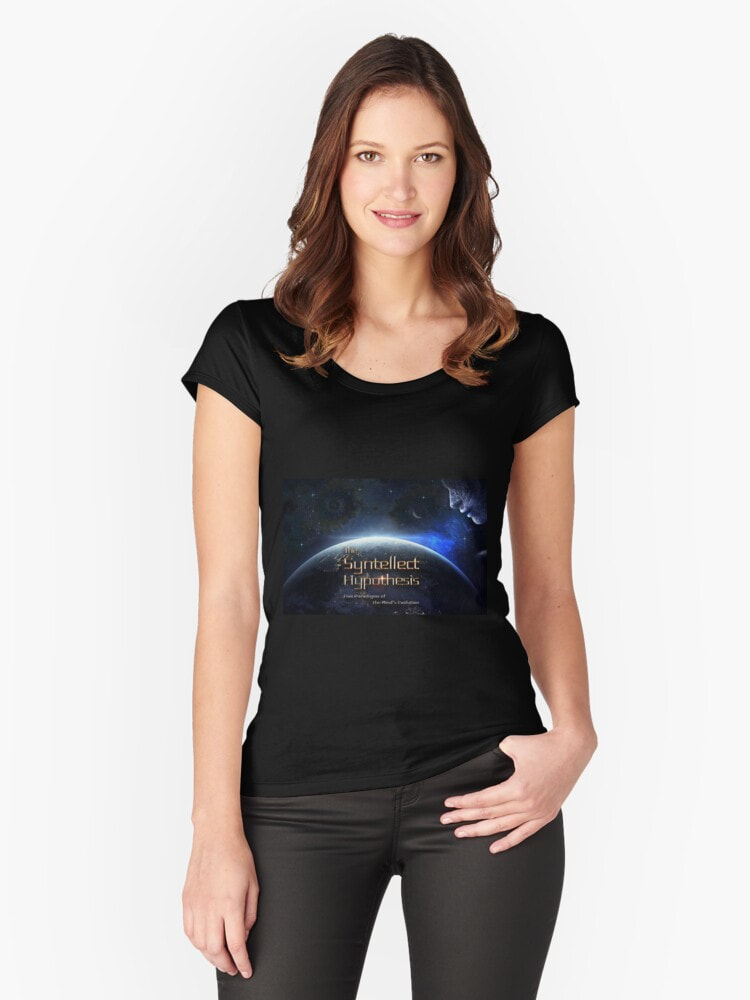|
by Alex Vikoulov "The world is a mirror of ourselves.” -Dayth Banger My favorite Greek philosopher Plato has left a great legacy in the series of written “Dialogues” which summarized parables which he had learned from his mentor, philosopher Socrates. One of the better known of these Dialogues is the “Allegory of the Cave.” In this allegory, people are chained from birth in a cave so that they can only see the shadows which are cast on the walls of the cave by a fire. To these people, the shadows represent the entirety of their existence — it is impossible for them to imagine a reality which consists of anything other than the blurry shadows on the wall. However, one prisoner escapes from the cave, goes out into the light of the sun and beholds true reality. When he tries to go back into the cave and tell the other captives the truth, he’s mocked as a madman. In Plato’s time, this story symbolized to him mankind's struggle to reach enlightenment and understanding through critical thinking and open-mindedness. Initially, we all are captives in the "cave" of our material world. Just as a prisoner may escape out into the sun, so may some people attain knowledge and ascend to the higher truth. What’s equally astonishing is the literal interpretation of Plato's tale: The idea that reality could be represented completely as “shadows” on the walls. To many people, the Holographic Principle, which is reminiscent of Plato's Allegory of the Cave, seems strange and counterintuitive: How could all of the physics which takes place in a given room be equivalent to some physics defined on the walls of the room? Could all of the information contained in your body actually be represented by your “shadow'? In fact, the Holographic Principle appears in M-theory in similar ways. In M-theory we are the shadows on the wall. The “room” is some larger, extra-dimensional spacetime and our four-dimensional world is just the boundary of this larger space. If we try to move away from the wall, we are moving into extra dimensions of space (what one might call probabilistic space, phase space, and so on, see my essay The Unified Field and Quantum Nature of Consciousness). In modern scientific terms, a helpful visualization of the Holographic Principle would look like a fisheye space-time geometry of the Universe known as “anti-de Sitter” (AdS) space. As you move away from the center, spatial increments get shorter until eventually the spatial dimension from the center extends to nothing — smacking into a boundary. This boundary has one less spatial dimension than its interior, referred to as the “Bulk,” wherein is projected the Holographic Universe — with all its mass and energy, as well as space-time, bending and curving as described in General Relativity.* RELATED: 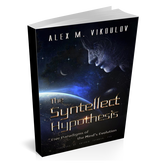 *Abridged excerpt from "The Syntellect Hypothesis: Five Paradigms of the Mind's Evolution" by Alex M. Vikoulov, available now on amazon.com, bn.com, audible.com, and directly from EcstadelicNET webstore. The idea that our world may be a hologram comes from the black hole physics. In the 1970s researchers knew that when an object falls into a black hole, all the detailed information about that object is lost. This was dubbed the Black Hole Information Paradox, and it turned out to be a “battleground” debate between renowned physicists Stephen Hawking and Leonard Susskind that lasted for decades. The Information Paradox seemed to contradict the Second Law of Thermodynamics, because one of the lost details was the object's entropy, or the information describing its microscopic parts. Susskind insisted that no information that goes into a black hole can be lost. What eventually offered a resolution to the Information Paradox was the fact that the surface area of the black hole's event horizon (the point of no return for infalling matter and energy) always grows. If entropy must grow, and a black hole's surface area must too, perhaps for the black hole they are one and the same, and information is somehow stored on the horizon. Physicists also began to wonder: What if the Universe itself stores information in a similar fashion? One of the starting assumptions of quantum mechanics was that information could be stored in every volume of space. But any patch of space can potentially become a black hole, Nature's densest file folder, which stores information in bits of area. Perhaps, then, all that's needed to describe a patch of space, black hole or otherwise, is that surface area's content of information. The idea was named the Holographic Principle, after the way that a hologram encodes 3D information on a 2D surface.* Video: World Science Festival - What is the Holographic Principle?  *Abridged excerpt from "The Syntellect Hypothesis: Five Paradigms of the Mind's Evolution" by Alex M. Vikoulov, available now on amazon.com, bn.com, audible.com, and directly from EcstadelicNET webstore. In his 1980 book, Wholeness and the Implicate Order, theoretical physicist and philosopher David Bohm, first presented the hypothesis of the Holographic Universe. Bohm was one of the most significant theoretical physicists of the 20th century, who contributed unorthodox ideas to quantum theory, neuropsychology and philosophy of mind. Bohm advanced the view that quantum physics meant that the old Cartesian dualism – the notion that there are two kinds of substance, the mental and the physical, that somehow interact – was too limited. To complement it, he developed a mathematical and physical theory of "implicate" and "explicate" order. In collaboration with neuroscientist Karl Pribram, Bohm helped to develop the Holonomic Brain theory, a model of human cognition that describes the brain as a holographic storage network. While trying to decode the nature of reality, Bohm focused on consciousness in particular as a coherent whole, which is dynamic and never complete but rather an unfolding process. Proponent of the Holonomic Brain theory, he also believed that the brain, at the neuronal level, works according to the mathematics of quantum effects, and postulated that thought is distributed and non-localized just as quantum entities are. Bohm drew parallels between the Universe and the brain, both being holographic in nature.* Image Credit: TrendinTech - Neural Networks of Scales  *Abridged excerpt from "The Syntellect Hypothesis: Five Paradigms of the Mind's Evolution" by Alex M. Vikoulov, available now on amazon.com, bn.com, audible.com, and directly from EcstadelicNET webstore. Bohm claimed that "as with consciousness, each moment has a certain explicate order, and in addition it enfolds all the others, though in its own way. So the relationship of each moment in the whole to all the others is implied by its total content: the way in which it 'holds' all the others enfolded within it." Bohm characterized consciousness as a process in which at each conscious observer moment, informational content that was previously implicate is presently explicate, and content which was previously explicate has become implicate. In analogy to Alfred North Whitehead's notion of Actual Occurrence, Bohm considered this notion of moment: “I propose that each moment of time is a projection from the total implicate order. The term projection is a particularly happy choice here, not only because its common meaning is suitable for what is needed, but also because its mathematical meaning as a projection operation, P, is just what is required for working out these notions in terms of the quantum theory.” Bohm employed the hologram as a means of characterizing implicate order, noting that each region of a photographic plate in which a hologram (“holo” - whole, “gram” - image) is observable contains within it the whole three-dimensional image, which can be viewed from a range of perspectives. The main characteristic of a hologram is that every part of the stored information is distributed over the entire hologram, a property called holographic distributedness. That is, each region contains a whole and undivided image, albeit a fuzzier version of it. In Bohm’s words: “... a new notion of order … is not to be understood solely in terms of a regular arrangement of objects (e.g., in rows) or as a regular arrangement of events (e.g. in a series). Rather, a total order is contained, in some implicit sense, in each region of space and time. Now, the word 'implicit' is based on the verb 'to implicate'. This means 'to fold inward' ... so we may be led to explore the notion that in some sense each region contains a total structure 'enfolded' within it." In Bohm’s conception of order, primacy is given to the undivided whole, and the implicate order inherent within the whole, rather than to parts of the whole, such as particles, quantum states, and continua. For Bohm, the whole encompasses all things, structures, abstractions, and processes, including processes that result in relatively stable structures as well as those that involve a metamorphosis of structures or things. In this view, parts may be entities normally regarded as physical, such as atoms or subatomic particles, but they may also be abstract entities, such as quantum states. Whatever their nature and character, according to Bohm, these parts are considered in terms of the whole, and in such terms, they constitute relatively separate and independent "sub-totalities." The implication of the view is, therefore, that nothing is fundamentally separate or independent. Thus, according to Bohm’s view, the whole is in continuous flux, a wave structure of the universe-in-motion, and hence is referred to as the “Holomovement” (movement of the whole). Bohm objected to the assumption that the world can be reduced to a set of irreducible particles within a three-dimensional Cartesian grid, or even within the four-dimensional curvilinear space of relativity theory. Bohm came instead to embrace a concept of reality as a dynamic movement of the whole: "In this view, there is no ultimate set of separately existent entities, out of which all is supposed to be constituted. Rather, unbroken and undivided movement is taken as a primary notion." Bohm believed that the Implicate Order had to be extended into a multidimensional reality, in other words, the holomovement endlessly enfolds and unfolds into infinite dimensionality. Within this milieu there are independent sub-totalities (such as physical elements and human entities) with relative autonomy. Bohm maintained that relativity and quantum theory are in basic contradiction in their essential respects, and that a new concept of order should begin with that toward which both theories point: undivided wholeness. The physicist challenged the scientific orthodoxy of reductionism which immensely had contributed to the success of science in the past four centuries by breaking things apart. But Bohm's point of view was just the opposite to reductionist approach: He started with a notion of undivided wholeness and derived the parts as abstractions from the whole. The holomovement included not just physical reality, but life, consciousness and cosmology. As Bohm summed it up at the end of the book: "Our overall approach has thus brought together questions of the nature of the cosmos, of matter in general, of life, and of consciousness. All of these have been considered to be projections of a common ground. This we may call the ground of all that is." In the wake of Bohm’s theories, groups of scientists now converge on the holistic notion that Strong Emergence, non-computable macroscopic property that physical systems may exhibit at a certain threshold of complexity, essentially meaning that “the whole is greater and unpredictable that the sum of its constituent parts," plays the most crucial role in the fundamental process of evolution.* Video: World Science Festival - A Thin Sheet of Reality: Universe as a Hologram 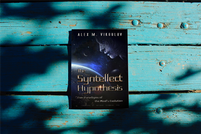 *Abridged excerpt from "The Syntellect Hypothesis: Five Paradigms of the Mind's Evolution" by Alex M. Vikoulov, available now on amazon.com, bn.com, audible.com, and directly from EcstadelicNET webstore. In 1993, a significant milestone in the holographic saga has been reached when the famous Dutch theoretical physicist Gerard 't Hooft put forward the first rigorous model of the Holographic Universe. The Holographic Principle formulated by 't Hooft mathematically showed that the information (referred to as entropy in physics) within the volume of any 3-dimensional space can be fully described by the two-dimensional surface enclosing that space. In 1995, Leonard Susskind, along with collaborators Tom Banks, Willy Fischler, and Stephen Shenker, presented a formulation of the new M-theory using a holographic description in terms of black holes and branes. The Matrix Theory they proposed was first suggested as a description of two branes in 11-dimensional supergravity by Bernard de Wit, Jens Hoppe, and Hermann Nicolai. The later physicists reinterpreted the same matrix models as a description of the dynamics of black holes in particular. Holography allowed them to conclude that the dynamics of these black holes give a complete non-perturbative formulation of M-theory. In 1997, Juan Maldacena gave the first holographic descriptions of a higher-dimensional object, the 3+1-dimensional type IIB membrane, which resolved a long-standing problem of finding a string description which describes a gauge theory. These developments simultaneously explained how String Theory is related to some forms of supersymmetric quantum field theories. Recently, Raphael Bousso, while at Stanford University, helped formulate a more precise and more broadly applicable statement of the principle that involves light rays. "The world doesn't appear to us like a hologram, but in terms of the information needed to describe it, it is one," Bousso says. "The amazing thing is that the Holographic Principle works for all areas in all space times. We have this amazing pattern there, which is far more general than the black hole picture we started from... What this is telling us is, there is a description of the world we should be looking for which will be more economical than the one that we have right now, and will presumably have to do with quantum gravity." Whereas the physical universe is still generally seen to be composed of "matter" and "energy," Jacob Bekenstein speculatively summarized in his 2003 article published in Scientific American magazine a current trend set by John Archibald Wheeler, which suggests to "regard the physical world as made of information, with energy and matter as incidentals." Bekenstein pointed out that "Thermodynamic entropy and Shannon entropy are conceptually equivalent: the number of arrangements that are counted by Boltzmann entropy reflects the amount of Shannon information one would need to implement any particular arrangement..." of matter and energy. The only difference between the thermodynamic entropy of physics and Shannon's entropy of information is in the units of measure; the former is expressed in units of energy divided by temperature, the latter in essentially dimensionless "bits" of information.* Video: D-Theory of Time: Digital Presentism - Ecstadelic Media  *Abridged excerpt from "The Syntellect Hypothesis: Five Paradigms of the Mind's Evolution" by Alex M. Vikoulov, available now on amazon.com, bn.com, audible.com and directly from EcstadelicNET webstore. In regards to computational equivalence, the Holographic Principle shows that a transistor can function as a binary unit (via the presence or absence of an electrical charge), so too can a single atom, or a subatomic particle – or, as Wheeler posited – the Planck harmonic oscillators of the quantum vacuum, space itself. The Holographic Principle states that the entropy of ordinary mass (not just black holes) is also proportional to surface area and not the volume of the interior, the volume itself is illusory and the Universe is really a hologram which is isomorphic to the information "inscribed" on the surface of its boundary.* RELATED: Our Universe displays not only the features of holography but fractality as well. Fractality is yet another way for the multiversal structure to self-organize, optimize and compress data, but what's most important, compactify universal structures ad infinitum akin to the Mandelbrot set, mathematical representation of infinite fractal propagation. The mathematics behind the Mandelbrot set, which is derived from a very simple underlying formula, makes us think that its intricate fractal chaos and stunningly beautiful design can't help but leave a feeling that there's something larger than life going on here, that you are staring right at some ineffable cosmic mystery.* Video: Patterns: As Above So Below - Ecstadelic Media (cc) 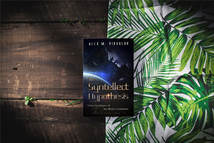 *Abridged excerpt from "The Syntellect Hypothesis: Five Paradigms of the Mind's Evolution" by Alex M. Vikoulov, available now on amazon.com, bn.com, audible.com and directly from EcstadelicNET webstore. As above, so below. Nature is now known for layering – repeating patterns of complexity like the filaments of Dark Matter that connect galactic superclusters together and the synapses that connect billions of neurons in the brain – there is a fractal reiteration across the magnitude of scales. Multifractal systems are common in Nature, especially geophysics. They include the length of coastlines, stock market charts, architecture, the Sun’s magnetic field time series, heartbeat dynamics, and human gait. Multifractal models, based on the principle of recursive self-similarity, have been done in various fields ranging from financial market modeling to Internet traffic, from texture synthesis to meteorology. We can even identify fractality of fundamental forces — gravity and electromagnetism bear a striking resemblance to strong and weak nuclear forces. Jump the scales and you’ll see that our solar system where the sun holds in orbit multiple planets thanks to gravitation, resembles an atom with a nucleus and orbiting electrons. Although, I should add here that some physicists, like Erik Verlinde, don't consider gravitation as a fundamental force, but rather an emergent property of curved space-time geometry, and I tend to agree with them. Fundamental forces are quite nicely scalable in relation to each other insofar electromagnetism, which carriers at the atomic level are photons of light, corresponds to weak nuclear force conveyed by W and Z bosons. In the realm of fermions, particles of matter, Bohm’s basic assumption was that “elementary particles are actually systems of extremely complicated internal structure, acting essentially as amplifiers of information contained in a quantum wave.” The current prevailing scientific view is that our Universe has minimum size for space and time intervals, and specifically fixes those sizes as the Planck length 1.616×10^-35 meters and Planck time 5.391×10^-44 seconds respectively. Thus, Planck constant is regarded a fundamental physical constant characteristic of the mathematical formulations of Quantum Mechanics, String theorists also favor it as a hypothetical size of a string, and M-theory sees it as a gateway to the hidden 11th dimension. However, the issue here is not whether time and length below Planck scale exist, but our observability of them – our ability to measure them. Given our current technology and knowledge, we have no way to actually probe that scale at all.* Video: The Chrysalis Conjecture - Ecstadelic Media (cc)  *Abridged excerpt from "The Syntellect Hypothesis: Five Paradigms of the Mind's Evolution" by Alex M. Vikoulov, available now on amazon.com, bn.com, audible.com and directly from EcstadelicNET webstore. It should be very clear that our inability to probe a certain scale does not imply the non-existence of sub-Planck structures. If that were the case then we would have concluded that atoms do not exist just over a century ago, contrary to what we know today. The strongest conclusion that might be drawn is that space and time have a minimal measurable resolution, or one might call it “Meaningful Granularity,” or pixels on the screen of our perception. Most scientists would still refer to it as the fundamental physical limit — the point where space-time stops behaving like the smooth continuum Einstein described and instead dissolves into "grains," just as a newspaper photograph dissolves into dots as you zoom in. In our journey of discovery in the domain of the ultra-small, nonetheless, we encountered meaningful granularities before. The fabric of reality is information theoretic and quantized at the level of Planck scale space-time, according to the current physics, and so too is it quantized at the atomic level in terms of nanotech applications. Perhaps, one bit of information corresponding to one Planck constant could currently appear like a viable conceptual framework for our observables but it doesn't mean that a "vibrating" string, wouldn't reveal a galaxy or another lower level structure in the universe down upon closer examination. In the longer run, as our future sublime superintelligence inevitably supersedes all natural forces in existence, any formidable challenge then becomes an engineering task, including probing sub-Planck level structures and manipulating matter, energy and space-time continuum itself. As physicist Richard Feynman used to say: "There's plenty of room at the bottom..." to pierce into and explore.* RELATED:  *Abridged excerpt from "The Syntellect Hypothesis: Five Paradigms of the Mind's Evolution" by Alex M. Vikoulov, available now on amazon.com, bn.com, audible.com and directly from EcstadelicNET webstore. The first appearance of fractals in cosmology was likely with Andrei Linde’s "Eternally Existing Self-Reproducing Chaotic Inflationary Universe" theory in 1986. In this theory, the evolution of a scalar field creates peaks that become nucleation points which cause inflating patches of space to develop into "bubble” universes, making the universe fractal on the very largest scales. Alan Guth's 2007 paper on "Eternal Inflation and its implications" shows that this variety of Inflationary universe theory is still being widely accepted today. And inflation, in some form or another, is still widely considered to be our best available cosmological model despite growing criticism. Since 1986, however, quite a large number of different cosmological theories exhibiting fractal properties have been proposed. And while Linde’s theory shows fractality at scales likely larger than the observable universe, theories like Causal Dynamical Triangulation and Quantum Einstein Gravity are fractal at the opposite extreme, in the realm of the ultra-small near the Planck scale. These recent theories of Quantum Gravity describe a fractal structure for space-time itself, and suggest that the dimensionality of space evolves with time. Specifically, they suggest that reality is 2D at the Planck scale, and that spacetime gradually becomes 4D at larger scales. French astronomer Laurent Nottale first suggested the fractal nature of space-time in a paper on Scale Relativity published in 1992, and published a book on the subject of Fractal Space-Time in 1993. French mathematician Alain Connes has been working for a number of years to reconcile Relativity with Quantum Mechanics, and thereby to unify the laws of Physics, using Noncommutative geometry. Fractality also arises in this approach to Quantum Gravity. An article by Alexander Hellemans in the August 2006 issue of Scientific American quotes Connes as saying that the next important step toward this goal is to "try to understand how space with fractional dimensions couples with gravitation." The work of Connes with physicist Carlo Rovelli suggests that time is an emergent property or arises naturally, in this formulation, whereas in Causal dynamical triangulation, choosing those configurations where adjacent building blocks share the same direction in time is an essential part of the recipe. Both approaches suggest that the fabric of space itself is fractal. One very exciting theory of Cosmological Natural Selection was proposed by the theoretical physicist Lee Smolin. The theory suggests that a process analogous to biological natural selection applies at the grandest of scales when collapsed black holes “seed” new universes on the "other side". These new baby universes have fundamental constant parameters (masses of elementary particles, Planck constant, elementary charge, and so forth) which may differ slightly from those of the parent universe. Each universe thus gives rise to as many new universes as it has black holes. The theory contains the evolutionary ideas of "reproduction" and "mutation" of universes, and so is formally analogous to models of population biology. Smolin published his idea in 1992 and summarized it in a book aimed at a lay audience called The Life of the Cosmos. Carl Sagan, a legendary TV personality, host of the series “Cosmos,” once said on air: “There is an idea -- strange, haunting, evocative -- one of the most exquisite conjectures in science or religion. It is entirely undemonstrated; it may never be proved. But it stirs the blood. There is, we are told, an infinite hierarchy of universes, so that an elementary particle, such as an electron, in our universe would, if penetrated, reveal itself to be an entire closed universe. Within it, organized into the local equivalent of galaxies and smaller structures, are an immense number of other, much tinier elementary particles, which are themselves universe at the next level, and so on forever -- an infinite downward regression, universes within universes, endlessly. And upward as well. Our familiar universe of galaxies and stars, planets, and people, would be a single elementary particle in the next universe up, the first step of another infinite regress.” Video: Will We Transcend The Temporal Dimension? - Ecstadelic Media (cc)  *Abridged excerpt from "The Syntellect Hypothesis: Five Paradigms of the Mind's Evolution" by Alex M. Vikoulov, available now on amazon.com, bn.com, audible.com and directly from EcstadelicNET webstore. Our biological complexity, our biospheric environment and noospheric interactivity is emerging to be more than just a cosmic fluke, a highly improbable aftermath of some random quantum fluctuation but rather part of an incredible neural network that connects all points in our Universe and the multiverse generating highly advanced, complex, self-organizing structures from which information flow is continuously driving the transformation across all scales in a teleological evolution. In that view then, not only are the physics of our Universe unified with the biological complexity we are a part of, but the whole of the structure is a manifestation of what we’ve come to describe as consciousness, or if you’d like a feedback loop system of information across all scales from micro to macro producing self-awareness. This holofractal multiversal structure may be describable by the ultimate code, which is in essence, I conjecture, some sort of "meta-algorithmic" language based on binary code and fractal geometry, allowing syntactical freedom of expression, and transcribable into subjective data streams, observer-dependent perceptual realities. We are now on the cusp to uncover one of the deepest secrets of Nature — the multiversal fractality of sentient networks all the way down, and all the way up, ad infinitum. Superorganisms within superorganisms. Minds within minds. What’s also fascinating is that evolution might lead all advanced civilizations towards the same ultimate destination, one in which we are to transcend out of our current limited dimensionality into virtual worlds of our own design. This is the way how our fractal multiverse may spawn universes — through intelligent designer virtualities — and our Universe is most probably no exception! -Alex Vikoulov P.S. This was an exclusive abridged excerpt from my new book "The Syntellect Hypothesis: Five Paradigms of the Mind's Evolution" available now on Amazon, Audible, from Barnes & Noble, and directly from EcstadelicNET webstore. Tags: Is God the ultimate computer? space-time continuum, mathematical abstraction, quantum probability, quantum wavicles, Claude Shannon, holographic principle, holofractal principle, Plato, Socrates, Allegory of the Cave, M-theory, Unified Field, Quantum Consciousness, space-time geometry, anti-de Sitter space, Holographic Universe, General Relativity, black hole physics, Black Hole Information Paradox, Stephen Hawking, Leonard Susskind, Second Law of Thermodynamics, Quantum mechanics, quantum information, Implicate Order, Explicate Order, theoretical physics, David Bohm, quantum theory, neuropsychology, philosophy of mind, quantum physics, Cartesian dualism, neuroscience, Karl Pribram, Holonomic Brain theory, human cognition, Alfred North Whitehead, Actual Occurrence, holographic distributedness,holomovement, emergence, complexity, evolution,Gerard 't Hooft, Tom Banks, Willy Fischler, Stephen Shenker, M-theory, Matrix theory, Bernard de Wit, Jens Hoppe, Hermann Nicolai, Juan Maldacena, gauge theory, String Theory, Raphael Bousso, quantum gravity, Jacob Bekenstein, Scientific American, John Archibald Wheeler, thermodynamic entropy, entropy of information,computational equivalence, Planck harmonic oscillators, quantum vacuum, holography, fractality multiversal structure, Mandelbrot set, Mandelbrot fractal geometry, fractal propagation, Dark Matter, multifractal systems, geophysics, electromagnetism, gravitation, Erik Verlinde, curved space-time geometry, bosons, Richard Feynman, Planck length, Planck time, Meaningful Granularity, Planck constant, Andrei Linde, Inflationary Universe, Alan Guth, Eternal Inflation, cosmological model, Causal Dynamical Triangulation, Laurent Nottale, Scale Relativity, Fractal Space-Time, Alain Connes, Alexander Hellemans, Carlo Rovelli, Cosmological Natural Selection, Lee Smolin, Carl Sagan, quantum fluctuation, neural network, multiverse, virtual worlds, intelligent designer virtualities *Image Credit: Ecstadelic Media About the Author: Alex Vikoulov is a Russian-American futurist, evolutionary cyberneticist, philosopher of mind, CEO/Editor-in-Chief of Ecstadelic Media Group, painter essayist, media commentator, author of "The Syntellect Hypothesis: Five Paradigms of the Mind's Evolution," "The Origins of Us: Evolutionary Emergence and The Omega Point Cosmology," "The Physics of Time: D-Theory of Time & Temporal Mechanics," "The Intelligence Supernova: Essays on Cybernetic Transhumanism, The Simulation Singularity & The Syntellect Emergence," "Theology of Digital Physics: Phenomenal Consciousness, The Cosmic Self & The Pantheistic Interpretation of Our Holographic Reality," "NOOGENESIS: Computational Biology," "TECHNOCULTURE: The Rise of Man." Self-described neo-transcendentalist, digital theologian, transhumanist singularitarian, Lives in Burlingame, California (San Francisco Bay Area). More Bio... Author Website: www.alexvikoulov.com e-mail: [email protected]
1 Comment
Daniel Rezi
7/10/2017 12:42:49 pm
Great stuff!!
Reply
Leave a Reply. |
Categories
All
Recent Publications The Cybernetic Theory of Mind by Alex M. Vikoulov (2022): eBook Series The Syntellect Hypothesis: Five Paradigms of the Mind's Evolution by Alex M. Vikoulov (2020): eBook Paperback Hardcover Audiobook The Omega Singularity: Universal Mind & The Fractal Multiverse by Alex M. Vikoulov (2022): eBook THEOGENESIS: Transdimensional Propagation & Universal Expansion by Alex M. Vikoulov (2021): eBook The Cybernetic Singularity: The Syntellect Emergence by Alex M. Vikoulov (2021): eBook TECHNOCULTURE: The Rise of Man by Alex M. Vikoulov (2020) eBook NOOGENESIS: Computational Biology by Alex M. Vikoulov (2020): eBook The Ouroboros Code: Reality's Digital Alchemy Self-Simulation Bridging Science and Spirituality by Antonin Tuynman (2019) eBook Paperback The Science and Philosophy of Information by Alex M. Vikoulov (2019): eBook Series Theology of Digital Physics: Phenomenal Consciousness, The Cosmic Self & The Pantheistic Interpretation of Our Holographic Reality by Alex M. Vikoulov (2019) eBook The Intelligence Supernova: Essays on Cybernetic Transhumanism, The Simulation Singularity & The Syntellect Emergence by Alex M. Vikoulov (2019) eBook The Physics of Time: D-Theory of Time & Temporal Mechanics by Alex M. Vikoulov (2019): eBook The Origins of Us: Evolutionary Emergence and The Omega Point Cosmology by Alex M. Vikoulov (2019): eBook More Than An Algorithm: Exploring the gap between natural evolution and digitally computed artificial intelligence by Antonin Tuynman (2019): eBook Our Facebook Pages
A quote on the go"When I woke up one morning I got poetically epiphanized: To us, our dreams at night feel “oh so real” when inside them but they are what they are - dreams against the backdrop of daily reality. Our daily reality is like nightly dreams against the backdrop of the larger reality. This is something we all know deep down to be true... The question then becomes how to "lucidify" this dream of reality?"— Alex M. Vikoulov Public Forums Our Custom GPTs
Alex Vikoulov AGI (Premium*)
Be Part of Our Network! *Subscribe to Premium Access Make a Donation Syndicate Content Write a Paid Review Submit Your Article Submit Your Press Release Submit Your e-News Contact Us
|

